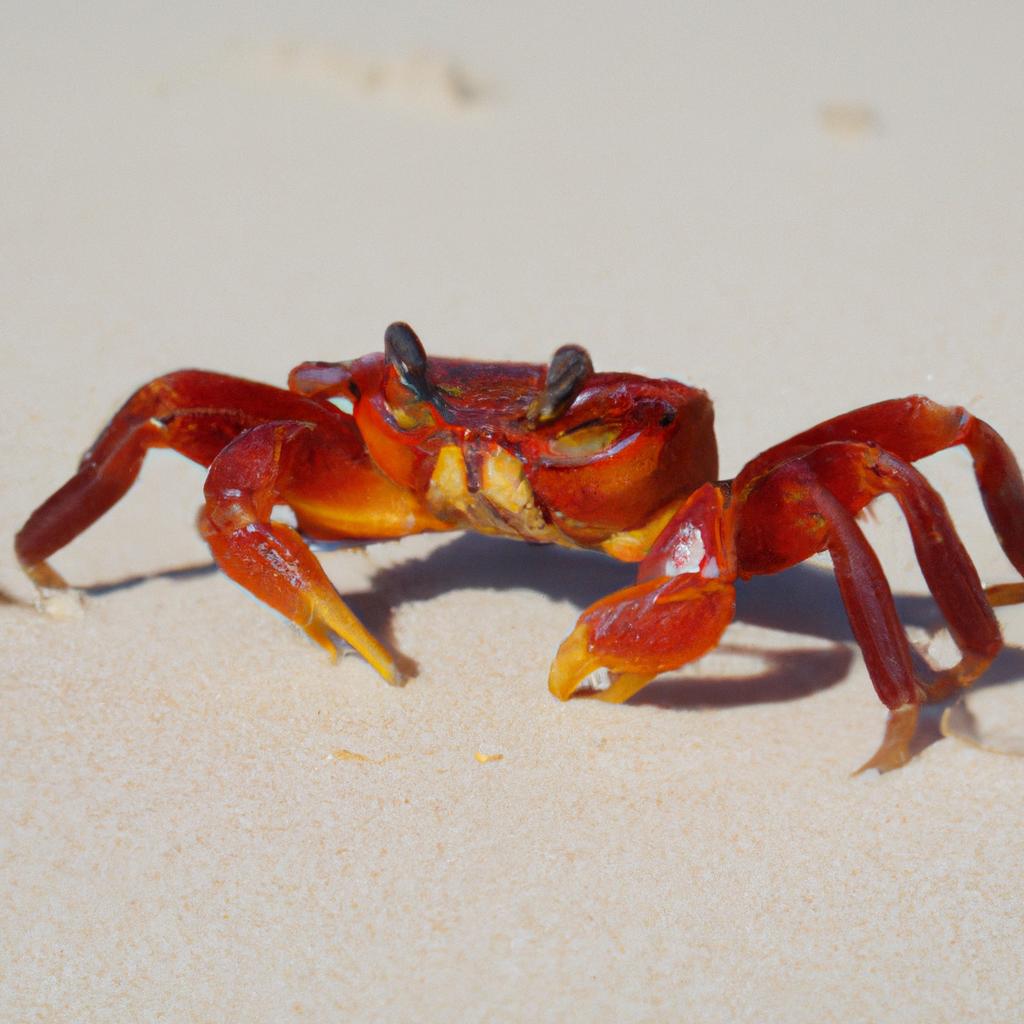Are you seeking a distinctive and exhilarating wildlife encounter? Look no further than Australia’s red crab! These captivating creatures possess unparalleled qualities, making them an invaluable part of the ecosystem.
Red crabs are indigenous to Christmas Island and the Cocos (Keeling) Islands in the Indian Ocean. With their vibrant red shells and distinctive appearance, they have captured the hearts of nature enthusiasts worldwide. Let’s delve into the mesmerizing world of red crab Australia, exploring their habitat, life cycle, migration habits, and even the delectable culinary uses of red crab meat.
The Marvelous Life Cycle of Red Crabs
The life cycle of red crabs is a complex and enthralling process encompassing several stages. Understanding these stages is crucial in appreciating the significance of red crabs in the ecosystem.
The Stages of the Red Crab Life Cycle
-
Egg Stage: It all begins with the female red crab laying thousands of eggs in the ocean. Subsequently, these eggs hatch into larvae, which drift with the currents for several weeks.
-
Larval Stage: During this stage, the larvae undergo multiple molts, growing larger and more developed with each molt. Eventually, they metamorphose into juvenile crabs resembling miniature versions of adult red crabs.
-
Juvenile Stage: Juvenile crabs thrive in the forest, feasting on fallen leaves and organic matter. They remain in this stage for several months to grow and develop until reaching maturity.
-
Adult Stage: Once mature, red crabs migrate to the ocean to mate and lay eggs, completing the cycle.
Several factors can influence the breeding and migration habits of red crabs. The lunar cycle plays a pivotal role in synchronizing the breeding and migration on Christmas Island. Additionally, climate change can impact the timing and intensity of the migration, with warmer temperatures causing earlier migration and extended droughts potentially delaying or reducing the number of migrating crabs.
The Spectacular Red Crab Migration on Christmas Island
Between October and November each year, the red crab population of Christmas Island embarks on an extraordinary journey. Over the course of several weeks, millions of crabs journey from the island’s forests to the coast for spawning. This migration stands as one of the most astonishing natural events globally, attracting visitors from around the world.
The Significance of the Migration
The red crab migration is not only a breathtaking spectacle but also a vital process for the ecosystem of Christmas Island. During the migration, the crabs serve as a crucial food source for numerous predators, including birds, lizards, and even domestic animals. Moreover, as they travel to the coast, they distribute vital nutrients throughout the island’s ecosystem, providing a significant boost to its flora and fauna.
Beyond its ecological importance, the red crab migration is a crucial aspect of Christmas Island’s tourism industry. Visitors flock from near and far to witness this incredible phenomenon, bolstering the island’s economy through tourism.
Red Crab Fishing: Balancing Industry and Conservation
Australia’s red crab fishing industry holds substantial economic value. It provides employment opportunities for locals and supplies seafood to markets worldwide. However, fostering a delicate equilibrium between economic interests and conservation efforts is vital for ensuring the sustainability of red crab populations.
Insights into the Red Crab Fishing Industry in Australia
The Australian Fisheries Management Authority regulates the fishing industry by establishing quotas and monitoring fishing practices to avoid overfishing and safeguard the species. Such regulations are crucial to maintaining the robust health of red crab populations for future generations.
Red crab fishing is highly regulated in Australia, with strict quotas and regulations in place to protect the species. The industry primarily revolves around Christmas Island, where the majority of red crab populations reside. The fishing season typically coincides with the red crab migration, spanning from November to January. During this period, fishers employ baited traps to catch crabs, which are then processed and shipped worldwide.
Embracing Sustainable Fishing Practices and Regulations
To ensure the long-term viability of red crab populations, the Australian government has implemented various regulations governing fishing practices. These regulations include setting yearly catch limits and implementing minimum size limits to prevent the capture of juvenile crabs.
Furthermore, the fishing industry adopts sustainable practices, such as using baited traps that minimize bycatch and reduce damage to the ocean floor. These practices contribute to maintaining the robustness and viability of red crab populations for generations to come.
In conclusion, Australia’s red crab fishing industry is a critical source of income for local communities. However, it must be managed sustainably to safeguard the species’ long-term survival. Strict regulations and sustainable fishing practices play an influential role in preserving red crabs’ vital role in the Australian ecosystem.
Savoring the Delicacy: Culinary Uses of Red Crab Meat
Calling all food enthusiasts! Are you ready to embark on a culinary adventure? Look no further than red crab meat—a delicacy cherished by Australians and gastronomes worldwide for generations.
Red crab meat is renowned for its sweet and delicate flavor, often likened to that of lobster or shrimp. Rich in protein and omega-3 fatty acids, it offers both delectable and nourishing qualities.
Australia embraces red crab meat as a beloved ingredient in numerous dishes, ranging from crab cakes and crab bisque to crab salads. It also frequently graces sushi rolls and other savory seafood creations. The meat’s versatility in the kitchen, coupled with its nutritional benefits, makes it highly esteemed.
Across the globe, red crab meat is treasured in various cuisines. In Asia, it stars in stir-fries and noodle dishes, while Europe often presents it as a main course accompanied by an array of side dishes.
Whether you’re an experienced foodie or an adventurous beginner, red crab meat is a must-try ingredient. Its unique flavor and texture elevate any dish, while its nutritional profile ensures a wholesome choice for any meal.
Nurturing the Future of Red Crabs in Australia
As we’ve witnessed, red crabs play a pivotal role in Australia’s ecosystem. Yet, their future is not without challenges. Climate change, habitat destruction, and unsustainable fishing practices all threaten the survival of this species.
To combat these threats, conservation efforts are in motion to safeguard red crabs and their habitat. The Australian government strictly regulates the number of red crabs harvested annually, and sustainable fishing practices are promoted to ensure the industry’s long-term viability.
Additionally, researchers explore the impact of climate change on red crab populations and seek ways to mitigate its effects. By understanding the challenges facing red crabs and joining forces to address them, we can secure the thriving existence of this incredible species in Australia for generations to come.
In conclusion, red crab Australia stands as an extraordinary species, essential to the country’s ecosystem. From their remarkable life cycle and migration patterns to their culinary marvels and sustainability, there is much to discover and appreciate about these fascinating creatures. As we embark on the path ahead, prioritizing the preservation and protection of red crabs and their habitat will ensure their thriving existence for years to come.
TooLacks: Your trusted companion in innovation and exploration.

